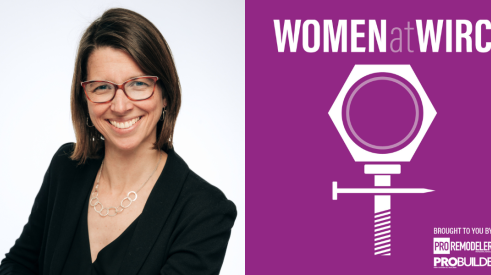Are you thinking of buying something for your business? Have you bought something that sounded great but is on the bookshelf not being used now? Think about the last time you went to a trade show. Thousands of new products, tools, and software programs all tout how they can improve your business and improve your client experience. Most of that is true, if done properly. The challenge is making sure you are not trying to fix a problem with a product and missing a key element, such as a process. For example, scanners have been around for a long time. Many people purchased them only to find that going paperless means so much more than the hardware or the product. Complementary products such as Dropbox, Evernote, and other cloud-based storage with access from anywhere make the scanner and the goal of going paperless more achievable than ever.
Most of us at one time have been lured in by a seminar on sales training, the new app for organization, or the new CRM software that will improve customer service. Don’t be fooled by a one-time event fixing your sales issues or the software that will improve your customer service. These must be pieces of a bigger plan.
There are always new software programs, tools, and products at the builder shows. People will spend hours researching which one is best for them and purchase the product; but after months of failed attempts, they might bail on the implementation because the hours were not spent on defining the goal, identifying the process, and finding what else is needed to achieve success. Sometimes it is as simple as getting buy-in from the employees who are going to use the product. You could fail with implementation because of the, “We have always done it this way,” and, “Why change?” attitude.
Sometimes a product will catch your eye. The question is, will it solve your problems? The solution should come from a need. Does it align with your current goals? Is it a budgeted item, or do you have to create additional revenue or profits to be able to implement it? You might ask the question: Do I identify the need and the process and then go find the product, or do I find a great product and then see how it fits into my process? I think it is a timing issue. Sometimes you might come across a great product first and then see how it fits in your existing systems. Or you might identify a need and then go find a product.
What else would you need to make this successful? For example, buying a scanner would not solve the goal of going paperless. You will need a place to store and access the files. Then you would need a process for creating and maintaining folders, when and how often you would scan, and when and how often you would back up. Then you would identify what could and could not be destroyed after scanning.
You can create a checklist for evaluating future purchases. Questions on the checklist beyond the cost of the product might include the following: Why? Which goal is this achieving? Who would use it? What is the total cost of the implementation? What else would I need to do to make it successful? What are the maintenance costs? What are the soft costs including training? What are all of the steps in making this successful? What would the process look like? When would I know if it is successful or not? How often will I check in, debrief, and tweak? What would it cost me not to do this? Is it aligned with my goals? Is it in the budget? Would I need to increase revenue?
Thinking of the return on your investment? Don’t forget to add all of the costs beyond the purchase of the product, the cost of maintenance, annual upgrades if applicable, the cost of creating the process with your team, training your team, and finding learned lessons, tweaking, and re-training. This is going to be a more realistic cost. Also think about it in reverse: What if you don’t implement this? What would be the cost of not doing it? For example, there might be some efficiencies, increased referrals, improved client experience, increased closing ratio, increased revenue or profit per employee, or marketing opportunities if you spend the money. Often that is why newer businesses are sometimes quicker to move ahead—they are more willing to invest in their company and take risks.
Finally, know when to dump your idea. Give the product a timetable. For example, you will introduce the new software, check in every month, and after three months you will debrief all of the users of the product and decide if you need to make tweaks or if you are going to stop using it. Create clear start, check-in, and stop-using dates if it is not working. PR
--
Craig Durosko is the founder of Sun Design, a design/build firm located in McLean and Burke, Va., that is celebrating its 25th year in business.The company has won more than 80 design and service awards and was recently named one of the “Best Places to Work” in Virginia for the second year in a row. Durosko can be reached at craig@sundesigninc.com.
Thousands of new products, tools, and software programs all tout how they can improve your business and improve your client experience. The challenge is making sure you are not trying to fix a problem with a product and missing a key element, such as a process.
Add new comment
Related Stories
Forty Under 40 Remodeling Trendsetters
The new ideas embraced by our Forty Under 40 winners are examples of forward-thinking leadership in remodeling
How to Create a World-Class Remodeling Team
Great remodeling companies position themselves for the future with the right players
Get the Most Out of Your Teams with This Leadership Style
The transformational leadership style focuses on inspiring and motivating team members to achieve their full potential and exceed their expectations
How to Revamp Your Pre-Construction Process
Experiencing too much slippage and delays? See how Bridget Bacon of Red House Design Build solved these issues by improving the remodeler's pre-construction process
Building A Small Projects Division from the Ground Up
Through hard work and careful strategy, Harth Home Services has seen big growth
A Mindset of Serving Others
A research study shows surprising results about what makes us take ownership of our work.
3 Keys to Successful Team Management
On this episode of Women at WIRC, hear Laura Burnes delve into her approach to leadership and project management, in addition to sharing insights into Adams + Beasley Associates' winning culture.
4 Steps to Prep Your Business for Contraction
How a remodeling company plans ahead for the worst of times (and the best of times)
Helping Remodelers 'Get Their House In Order'
From remodeler to NARI executive to industry consultant, Diane Welhouse uses her expertise to help business owners













